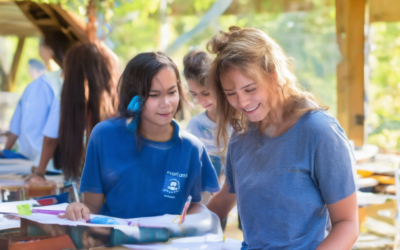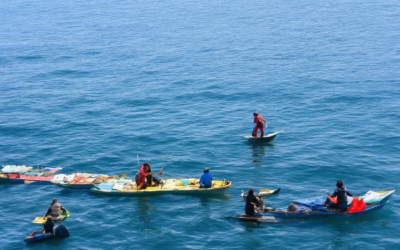Protecting our planet is a shared responsibility that calls for collective action. Whether through local clean-up drives or larger-scale conservation efforts, there are countless ways to contribute to environmental protection. Volunteering offers individuals the chance to make a meaningful impact, connecting them with causes that align with their values. By exploring volunteer opportunities near you for environmental protection, your efforts can leave a lasting positive mark on the world around you. Join the movement today and discover the many avenues available to support our planet’s health and sustainability.

How Can I Volunteer to Help the Environment?
Volunteering to help the environment offers a rewarding way to contribute to a sustainable future. Here are several effective ways to get involved:
- Local Environmental Organizations:** Start by researching local non-profits or environmental groups in your area. Many organizations host regular volunteer events such as beach cleanups, tree plantings, or recycling drives. These activities often require minimal commitment and can be found through online platforms or community boards.
- Join Conservation Efforts:** Consider volunteering for conservation projects aimed at protecting endangered species or restoring habitats. National parks and wildlife reserves often have programs that welcome volunteers, particularly those with skills in ecology or environmental science.
- Organize Eco-Events:** If you’re passionate about raising awareness, you could volunteer to organize educational events or workshops focused on sustainability. These events can be held at schools, community centers, or even your workplace.
- Advocate for Environmental Policies:** Volunteering for environmental advocacy groups allows you to play a role in shaping policies that protect our planet. This could involve everything from attending town hall meetings to participating in online campaigns aimed at influencing legislation.
- Support Sustainable Living Initiatives:** Volunteer at events promoting eco-friendly lifestyles, such as renewable energy fairs or zero-waste conventions. These events provide valuable information and connect you with others who share your commitment to environmental stewardship.
- Teach Sustainability:** Educate future generations by volunteering at schools or youth organizations. Leading workshops on topics like recycling, composting, and energy conservation can inspire young people to care for the environment.
By taking these steps, you can actively contribute to environmental preservation while gaining valuable experience and meeting like-minded individuals. Remember to choose reputable organizations and stay informed about their impact to ensure your efforts make a meaningful difference.
Example of Environmental Volunteering
Environmental volunteering involves contributing to ecological preservation through community-driven initiatives. One notable example is organizing a local community cleanup event aimed at improving public spaces and protecting nature.
- Plan and coordinate a coastal cleanup day where volunteers collect trash from beaches and surrounding areas.
- Involves recruiting local residents to participate in removing litter and debris, which directly benefits marine life and local wildlife habitats.
- Include educational components such as workshops on waste management and conservation efforts to enhance participant understanding and engagement.
- Work closely with local environmental organizations to ensure the initiative aligns with broader ecological goals and receives necessary resources and support.
- Document the event through photography and social media sharing to promote awareness and inspire future participation in similar activities.

Do Greenpeace Volunteers Get Paid?
Greenpeace volunteers typically do not receive monetary compensation for their contributions. The organization values the dedication of its volunteers and provides opportunities for skill development and environmental advocacy. However, compensation structures may vary depending on the region and role.
- Compensation Structure: In many regions, including Nordic countries, volunteers are not compensated financially. Their work is considered a donation to the cause.
- Regional Differences: Some countries or chapters might offer stipends or expenses to cover costs like travel or accommodation, though this is not universal.
- Volunteer Roles: Volunteers often take on roles such as campaign organizers, activists, or support staff, working alongside paid staff who handle leadership and administrative tasks.
- Benefits Beyond Pay: Volunteers gain valuable experience, network with like-minded individuals, and contribute to meaningful causes, which can be seen as a form of non-monetary compensation.
It’s important to note that Greenpeace emphasizes the importance of its volunteer program in achieving its mission. While they may not receive a salary, volunteers play a crucial role in the organization’s operations and are recognized for their commitment and passion.
Learn more about volunteer experiences and how you can contribute to environmental causes.

What Do Conservation Volunteers Do?
As conservation volunteers, we play a vital role in supporting our mission to protect and preserve the environment. Our responsibilities encompass a variety of tasks aimed at maintaining the health and sustainability of our natural spaces. Here’s a breakdown of what we do:
- Litter Monitoring and Removal : We regularly inspect and clean up areas affected by litter, ensuring these spaces remain pristine and welcoming for both wildlife and visitors.
- Invasive Species Management : We actively identify and remove invasive plant and animal species that threaten native ecosystems. This helps maintain biodiversity and ensures the survival of endangered species.
- Habitat Maintenance : We work on projects that enhance habitats for local flora and fauna. This includes planting native vegetation, creating birdhouses, and establishing wildlife corridors.
- Infrastructure Support : We assist in maintaining and improving the physical aspects of conservation sites, such as trails, signage, and facilities, to ensure safe and accessible environments for everyone.
- Wildlife Monitoring : We contribute to tracking and studying wildlife populations through activities like birdwatching, camera trapping, and recording observations. This data aids in conservation planning and protecting threatened species.
- Community Engagement : We organize educational events and workshops to raise awareness about environmental issues. By sharing knowledge with the public, we encourage sustainable practices and community involvement in conservation efforts.
- Administrative Support : We help with office tasks, including data entry, report preparation, and coordination with partners. This ensures smooth operations and effective project implementation.
- Research Assistance : We support researchers and conservationists by collecting data, conducting surveys, and helping with field studies. This contributes to a deeper understanding of ecological systems.
- Education and Outreach : We develop and deliver educational materials, such as brochures and online content, to inform visitors about conservation efforts and the importance of environmental stewardship.
- Special Projects : Depending on the season or specific needs, we may participate in larger-scale initiatives like beach cleanups, tree-planting campaigns, or habitat restoration projects.
By joining us as conservation volunteers, you become an integral part of our mission to protect and restore the planet. Together, we can make a meaningful impact on the environment and ensure a sustainable future for generations to come.
How to Get Into Conservation Work
To pursue a career in conservation work, follow these organized steps:
- Education and Training: – Obtain a bachelor’s degree in relevant fields such as Biology, Ecology, Environmental Science, or Zoology. These programs provide foundational knowledge in conservation.
- Volunteer Experience: – Seek volunteering opportunities with reputable organizations like the National Wildlife Federation . This hands-on experience can enhance your skills and network.
- Internships: – Apply for internships at local conservation agencies or national parks. These often lead to job opportunities and provide valuable experience.
- Skill Development: – Enhance your fieldwork skills through courses or workshops. Consider learning GIS and data analysis tools commonly used in conservation projects.
- Job Market and Qualifications: – Research regions with high demand for conservation workers, such as areas with unique habitats. Prepare for various roles by meeting educational and certification requirements.
- Networking and Collaboration: – Connect with professionals via LinkedIn or industry events. Attend conferences and workshops to build relationships essential for collaboration in conservation.
- Stay Informed: – Keep abreast of conservation trends by following journals and news outlets. Adaptability is key due to evolving funding and priorities in the field.
- Career Path Planning: – Consider combining education with volunteering early. Pursue relevant certifications, such as those offered by organizations like the Nature Conservancy , to boost your profile.

How to Participate in Conservation
Conservation efforts require collective action from individuals, communities, and organizations. Here are some effective ways to get involved:
- Volunteer : Support local conservation initiatives by volunteering at wildlife refuges, national parks, or environmental organizations. Tasks may include habitat restoration, species monitoring, or educational programs.
- Advocate for Conservation : Use social media platforms to raise awareness about endangered species, deforestation, or pollution. Share educational content and encourage others to take action.
- Educate Others : Organize workshops or presentations to teach others about conservation importance. Engage students, teachers, and community members to foster a deeper understanding of environmental issues.
- Support Causes Financially : Donate to reputable conservation organizations or funds dedicated to protecting ecosystems and wildlife. Your financial contribution can directly impact ongoing projects.
- Join Conservation Groups : Become a member of local or international conservation groups. These organizations often provide opportunities for hands-on involvement and access to resources.
- Travel with Purpose : Plan trips to visit protected areas or wildlife reserves. Many travel agencies offer tours focused on conservation, allowing you to witness efforts firsthand while contributing through tourism.
In addition to these actions, consider learning new skills or certifications in conservation biology or ecology to become more effective in your contributions. Collaboration with experts and professionals in the field can amplify your impact.
Conclusion : Participation in conservation can take many forms, from volunteering and advocating to supporting causes financially. Every effort, no matter the size, plays a crucial role in preserving our planet’s biodiversity for future generations.





0 Comments